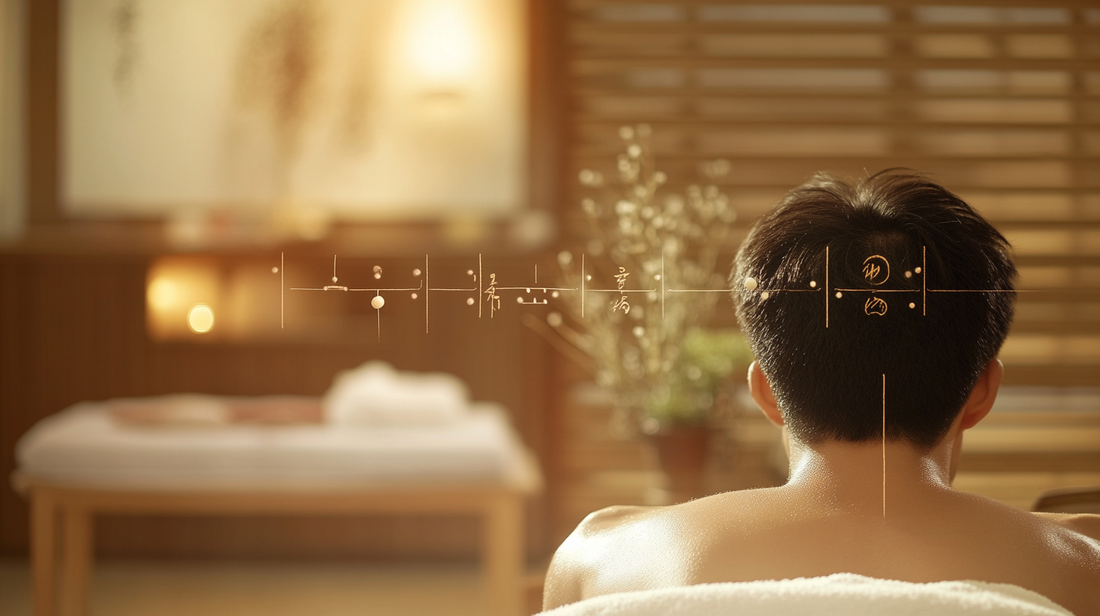
How to Choose Between Acupuncture, Cupping, or Physio
Share
Introduction
When dealing with chronic pain, muscle tension, or stress-related issues, it can be confusing to choose the right treatment. Should you go for acupuncture, try cupping, or see a physiotherapist? Each therapy has unique strengths, and understanding how they work can help you make an informed choice.
At Vital Duo, we regularly see clients who ask, “What’s better for me: acupuncture, cupping, or physio?” The answer depends on your condition, your constitution, and your goals. This blog breaks down each method—how it works, what it treats best, and when to use one over the other.
Acupuncture: Targeting Energy and Nervous System Balance
What It Is
Acupuncture is a core treatment in Traditional Chinese Medicine (TCM). It involves inserting fine, sterile needles into specific acupoints to influence the flow of Qi (vital energy) and restore balance in the body.
How It Works
- Stimulates meridians and organ systems
- Modulates the autonomic nervous system (calms stress response)
- Releases endorphins and anti-inflammatory mediators
- Increases local blood flow and muscle relaxation
"Acupuncture regulates the body's internal environment and promotes healing through neurophysiological mechanisms." — British Acupuncture Council, 2022
Best For:
- Chronic pain (back, neck, arthritis)
- Stress, anxiety, insomnia
- Sciatica or nerve compression
- Menstrual pain or digestive issues
What to Expect:
- 45 - 60 minute sessions
- Minimal discomfort
- Effects often cumulative over multiple sessions
Clinical Evidence:
- NIH Review (2021): Acupuncture effective for low back pain, migraines, and knee osteoarthritis
- BMJ Study (2018): Better than standard care for pain reduction and improved quality of life
Cupping Therapy: Releasing Muscle Tension and Stagnation
What It Is
Cupping uses suction from glass or silicone cups placed on the skin to create negative pressure. This draws blood to the surface, promotes circulation, and releases muscle and fascia tightness.
How It Works
- Loosens fascia and connective tissue
- Improves lymphatic flow and detoxification
- Clears Cold-Damp stagnation in TCM terms
- Often used along the Bladder and Gallbladder meridians on the back
"Cupping therapy shows measurable increases in microcirculation and muscle oxygenation." — Journal of Alternative Medicine Research, 2020
Best For:
- Muscular tension, knots
- Sports recovery and post-workout soreness
- Cold-induced stiffness
- Upper back pain and shoulder tightness
What to Expect:
- 15 - 30 minute sessions
- Circular red marks may appear (harmless and temporary)
- Immediate release or relaxation felt
Clinical Evidence:
- Cochrane Review (2018): Cupping shown effective in managing chronic neck and shoulder pain
- BMC Complementary Medicine (2021): Reported reduced pain and improved range of motion
Physiotherapy: Functional Movement and Rehabilitation
What It Is
Physiotherapy uses movement science, manual therapy, and exercise to restore functional movement and reduce pain. It is widely used for injury rehab and post-operative care.
How It Works
- Improves joint and muscle biomechanics
- Strengthens weakened muscle groups
- Restores movement patterns and stability
- Includes education and lifestyle guidance
"Physiotherapy is rooted in evidence-based, biomechanical intervention for recovery and performance." — Chartered Society of Physiotherapy (CSP), UK
Best For:
- Sports injuries and post-surgery rehab
- Posture correction and ergonomic pain
- Joint and ligament rehab (knees, shoulders, hips)
- Long-term strengthening programs
What to Expect:
- 45–60 minute sessions
- Hands-on work, guided exercises, education
- May require at-home practice for full benefit
Clinical Evidence:
- Journal of Physiotherapy (2020): Manual therapy + exercise most effective for mechanical low back pain
- Lancet Series on Low Back Pain (2018): Active rehab more effective than passive therapies long-term
Which Should You Choose?
| Your Condition | Best Choice |
|---|---|
| Sharp, radiating nerve pain | Acupuncture |
| Tight shoulders from desk work | Cupping + Acupuncture |
| Knee injury post-running | Physiotherapy + Acupuncture |
| Chronic fatigue and tension | Acupuncture + cupping |
| Postural imbalance | Physiotherapy |
| Menstrual pain or IBS | Acupuncture |
| Cold-related muscle stiffness | Cupping |
| Rehab after surgery | Physiotherapy |
Combined Approach
Often, the best results come from combining therapies. At Vital Duo, we frequently use acupuncture to address internal imbalances, cupping to release muscular tension, and refer to physiotherapists for long-term rehabilitation when needed.
Patient Case Snapshot
Patient: Male, 35, office worker
Complaint: Mid-back stiffness, shoulder tightness, sleep issues
Diagnosis: Liver Qi stagnation with muscular strain
Treatment Plan:
- Week 1–2: Acupuncture for stress and sleep + cupping for muscle tension
- Week 3–6: Continued acupuncture + referral to physiotherapist for posture correction
Results:
- By Week 4: 70% reduction in pain
- By Week 6: Improved posture, better sleep, no reliance on painkillers
What to Consider Before Choosing
Your Symptoms:
- Is it muscular, nerve-related, or movement-based?
- Do symptoms worsen with stress or cold?
Your Health Goals:
- Quick relief or long-term rehab?
- Mind-body balance or structural change?
Your Lifestyle:
- Can you commit to home exercises (physio)?
- Prefer hands-on therapy (cupping)?
- Want nervous system reset (acupuncture)?
Final Thoughts
Acupuncture, cupping, and physiotherapy are all powerful tools for healing pain, tension, and stress—but they work differently. Choosing the right one depends on your body, your goals, and sometimes a mix of both Eastern and Western methods.
At Vital Duo, we guide you through the options and offer personalised care rooted in Traditional Chinese Medicine, backed by evidence and experience. Whether you need acupuncture for nerve pain, cupping for muscular tightness, or physiotherapy for injury recovery, we help you make the best choice for your healing.
Academic References
- British Acupuncture Council. (2022). Clinical Guidelines for Musculoskeletal Pain
- Cochrane Review. (2018). Cupping Therapy in Chronic Neck Pain
- Chartered Society of Physiotherapy (CSP). (2020). Guide to Physiotherapy Best Practices
- BMJ. (2018). Acupuncture for Pain and Function in Clinical Trials
- Journal of Physiotherapy. (2020). Manual Therapy + Exercise for Back Pain
- BMC Complementary Medicine. (2021). Clinical Studies on Cupping Therapy
